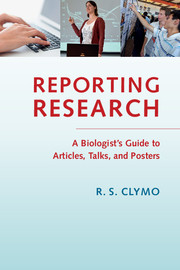8 - Managing error
Published online by Cambridge University Press: 05 October 2014
Summary
Most scientists work at the intersection of three processes (the hatched area in Figure 8.1): (1) specifying what question to ask of Nature; (2) expressing the question as a model (often mathematically even if vaguely as, for example, ‘Is there a relation between variables x and y?’); and (3) collecting and analysing data from a survey or experiment.
It is easy to ask the wrong question or to specify the wrong model. A plant physiologist observed that the kinetics of uptake of nitrate from solution by the roots of young barley plants resembled the kinetics of enzyme action and asked ‘What is the Michaelis constant of the enzyme?’ But this was a blind alley: the kinetics he observed were overwhelmingly the result of diffusion through the unstirred layer around the roots. Even when he had recognised this he specified an incorrect mathematical model, though he got close agreement to it with his data. Asking the right question and specifying it in the right form for testing are at the core of advance in understanding. They are specific to the particular problem though and are therefore outside the scope of this book. But the analysis of data (Figure 8.1), and the sorts of error we need to recognise, are within our scope.
- Type
- Chapter
- Information
- Reporting ResearchA Biologist's Guide to Articles, Talks, and Posters, pp. 211 - 242Publisher: Cambridge University PressPrint publication year: 2014



